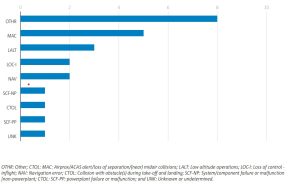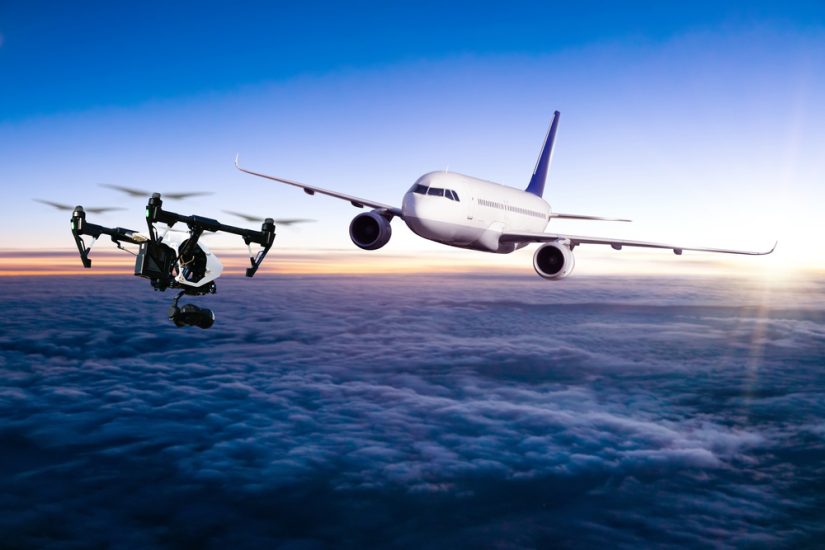According to the European Union Aviation Safety Agency (EASA)’s new Annual Safety Review for 2024 there was one fatality and one case of a serious injury caused by UAS in the year 2023. The fatality occurred at radio-controlled model aircraft club. Two out of 12 total accidents and serious incidents involved a crewed aircraft.
“These accidents were separate events and occurred on terrains for model aircraft aviation that are managed by model aircraft clubs and associations,” said EASA in its report. “In the fatal accident, an 8 kg model aircraft in full flight struck an uninvolved remote pilot. In the non-fatal accident, a 31 kg model sail plane diverted from its path during the towing phase and hit the ground before seriously injuring an uninvolved remote pilot of another UAS with one of its wings.
“Only one of the described accidents was investigated by an organisation on behalf of the national aviation accident investigation bodies.”
However, the real figure for drone-related accidents in the EU is likely to be much higher, as EASA limited mandatory reporting to UAS for which a certificate or declaration
is required unless the occurrence or other safety-related information involving such unmanned aircraft resulted in a fatal or serious injury to a person or it involved aircraft other than unmanned aircraft. A high percentage of drone operations in Europe are recreational drone flyers not covered by this report,
“Due to the special characteristics of the UAS domain, it is equally important to monitor the number of occurrences by UAS in which manned aviation was involved,” said EASA. “In the year 2023 the domain recorded two such occurrences. These were two serious incidents of Airprox events between UAS and manned aircraft. The manned aircraft involved in these occurrences were large aircraft that encountered UAS during approach and departure from a Member State aerodrome. The aircraft affected were Bombardier BD500 and Airbus A320. In both cases the size of the UAS encountered remained unknown or was not coded in the occurrence report. As regards their safety risks, these occurrences were given high ERCS scores.
The table below shows that in summary 17% (two serious incidents) of the total number of 12 occurrences in the UAS domain involved a manned aircraft.
The figure below depicts the occurrence categories assigned to the serious incidents and accidents for the UAS domain in the year 2023. Occurrences are categorised using the ICAO Accident Incident Data Reporting (ADREP) taxonomy for occurrence categories, developed to support the common coding of the main elements of an occurrence that should be investigated, recorded, and analysed.

“Categories are of different nature, e.g., operational such as an abrupt manoeuvre (AMAN), or environmental such as windshear or thunderstorm (WSTRW), technical such as system/ component failure or malfunction [non-powerplant] (SCF-NP), but they may also be consequential such as fire/ smoke resulting from impact (F-POST). Therefore, multiple categories may be assigned to a single occurrence. For example, if an engine failure occurred, and loss of control followed, the occurrence would be coded in both categories, i.e., SCF-PP: powerplant failure or malfunction and LOC-I: loss of control in flight. The sum of the number of occurrences per category may therefore be greater than the total number of occurrences realised in the period.
“The category ‘OTHR’ is meant for ‘any occurrence not covered under another category’/ The high usage of this category, also in combination with other categories, could mean that the reporters wanted to express the unusual character of the occurrence involving UAS or, when used alone, that the occurrence was so unique that they would not fit another category. For example, the occurrence category ‘OTHR’ was used for the accident that caused a fatality on the ground, and for two occurrences where the UAS were presumably operated in the ‘specific’ category for UAS operations. On the other hand, the use of the category ‘OTHR’ correlates also with the operational type 1 non-commercial or unknown and the operational type 2 was either unknown or not filled in. The occurrence category ‘MAC: Airprox/ACAS alert/loss of separation/(near) mid-air collisions’ was used for occurrences that were Airprox events. The occurrence category ‘LALT: Low altitude operations’ was used three times and notably in the two accidents that resulted in one serious and one minor injury to persons on the ground. While this occurrence category officially excludes the take-off or landing phase it was nevertheless used for the non-fatal accident that occurred in the towing phase (take-off phase) of a model aircraft that resulted in the serious injury. In conclusion, the use of the occurrence categories for different types of occurrences with UAS of different sizes should be studies and clarified, as there appears to be some hesitancy about assigning ‘MAC: Airprox/ACAS alert/ loss of separation/(near) mid-air collisions’ to occurrences with very small UAS.”
For more information
https://www.easa.europa.eu/en/document-library/general-publications/annual-safety-review-2024
(Image: Shutterstock)




